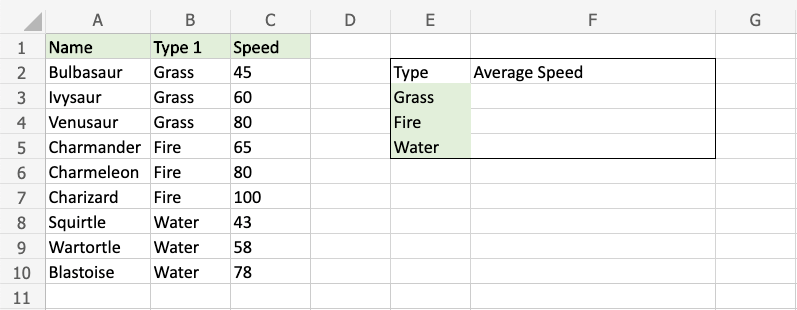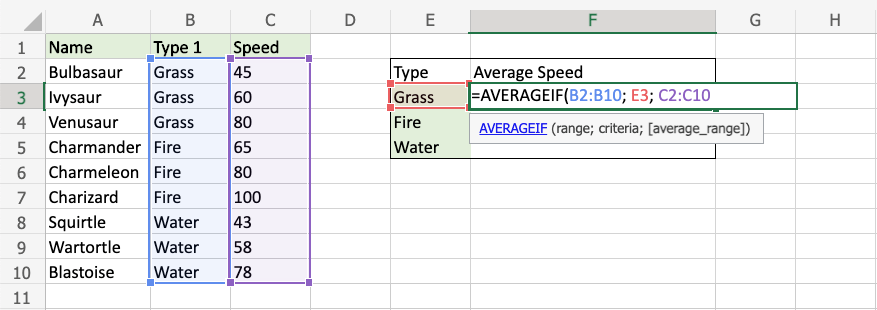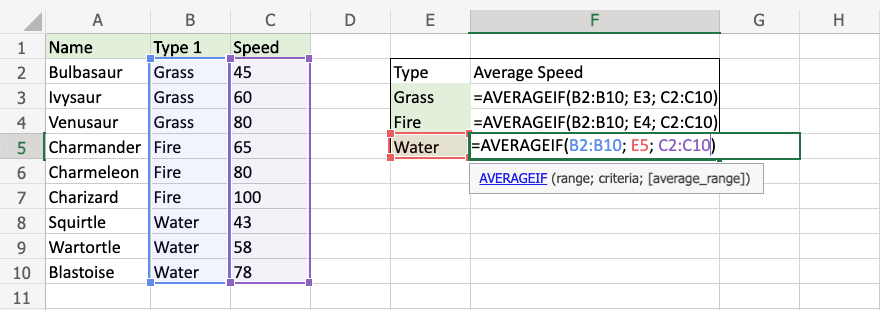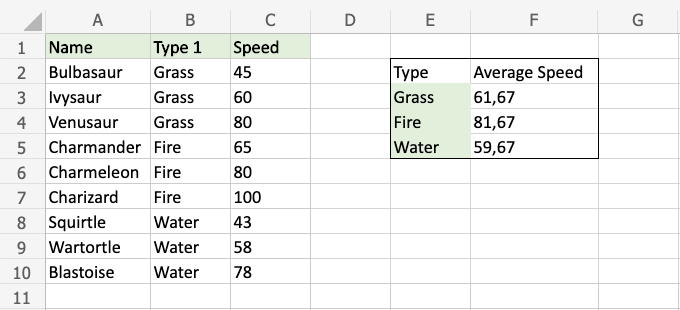AVERAGEIF
Excel AVERAGEIF Function
An Excel prepared function called AVERAGEIF determines the average of a range depending on a true or false condition.
It is typed =AVERAGEIF and has three parts:
=AVERAGEIF(range, criteria, [average_range])
The condition is referred to as criteria, which can check things like:
- If a number is greater than another number >
- If a number is smaller than another number <
- If a number or text is equal to something =
The range in which the function determines the average is called the [average_range].
Note: You do not have to use [average_range].
The function computes the average of the same range as condition if it is not supplied.
Note: A symbol, such as a comma or semicolon, is used to separate the various components of the function;
The symbol is determined by your language preferences.
Example AVERAGEIF function
Determine the Pokemon of the grass type’s average speed:
The type must be “Grass” in order to qualify.

Example AVERAGEIF function, step by step:
- Select the cell F3
- Type =AVERAGEIF
- Double click the AVERAGEIF command

4. Specify the range for the condition B2:B10 (the Type 1 values)
5. Type ,
6. Specify the criteria (the cell E3, which has the value “Grass”)
7. Type ,
8. Specify the range for the average C2:C10 (the Speed values)
9. Hit enter

The function now determines the Bulbasaur, Ivysaur, and Venusaur’s average speed values. These Pokemon are of the Grass type.
To compare Pokemon of the Fire and Water types, repeat this function:

Note: For the remaining rows, you can use the filling function; however, you must use absolute references for the ranges.
The average speed values for each class are now visible:

